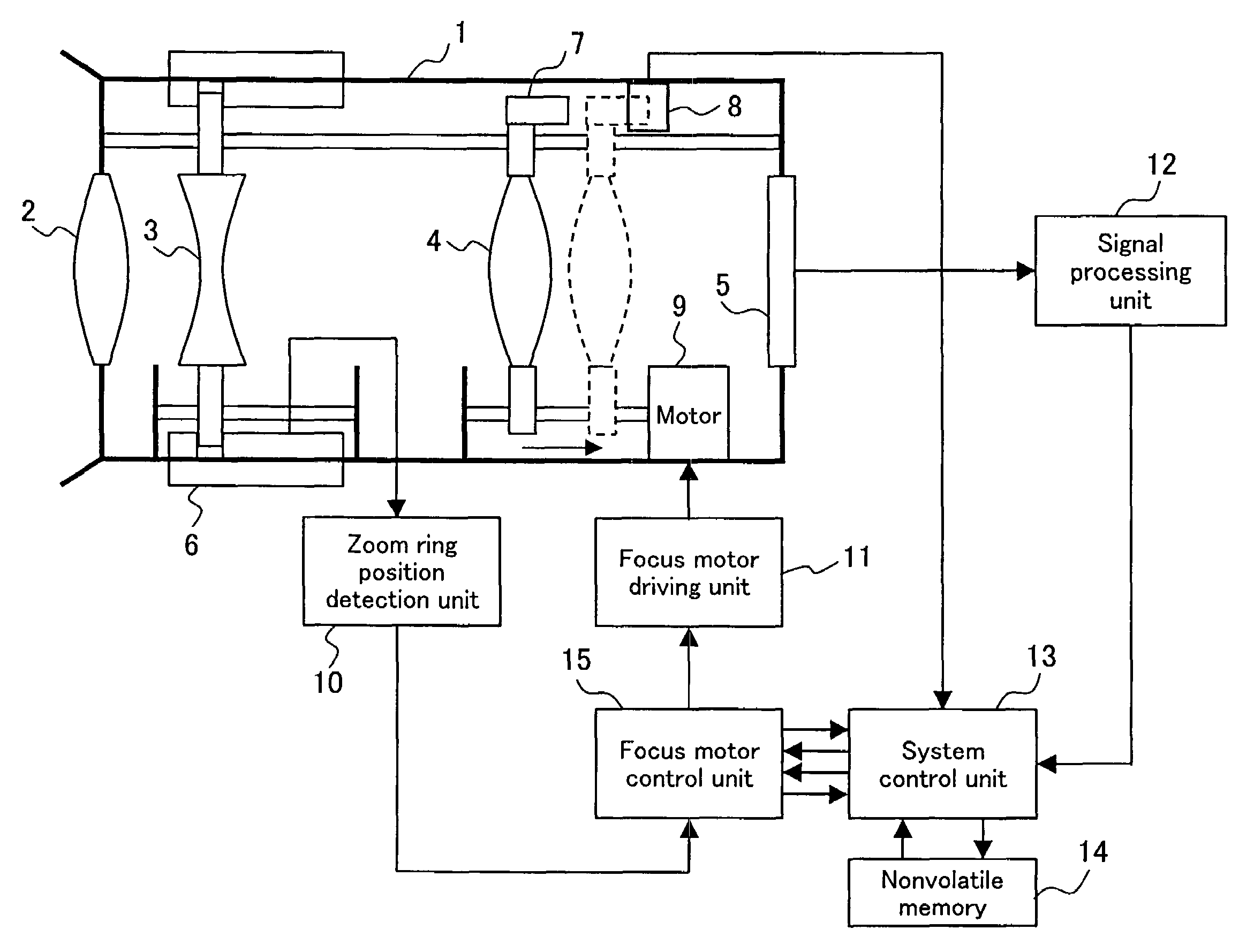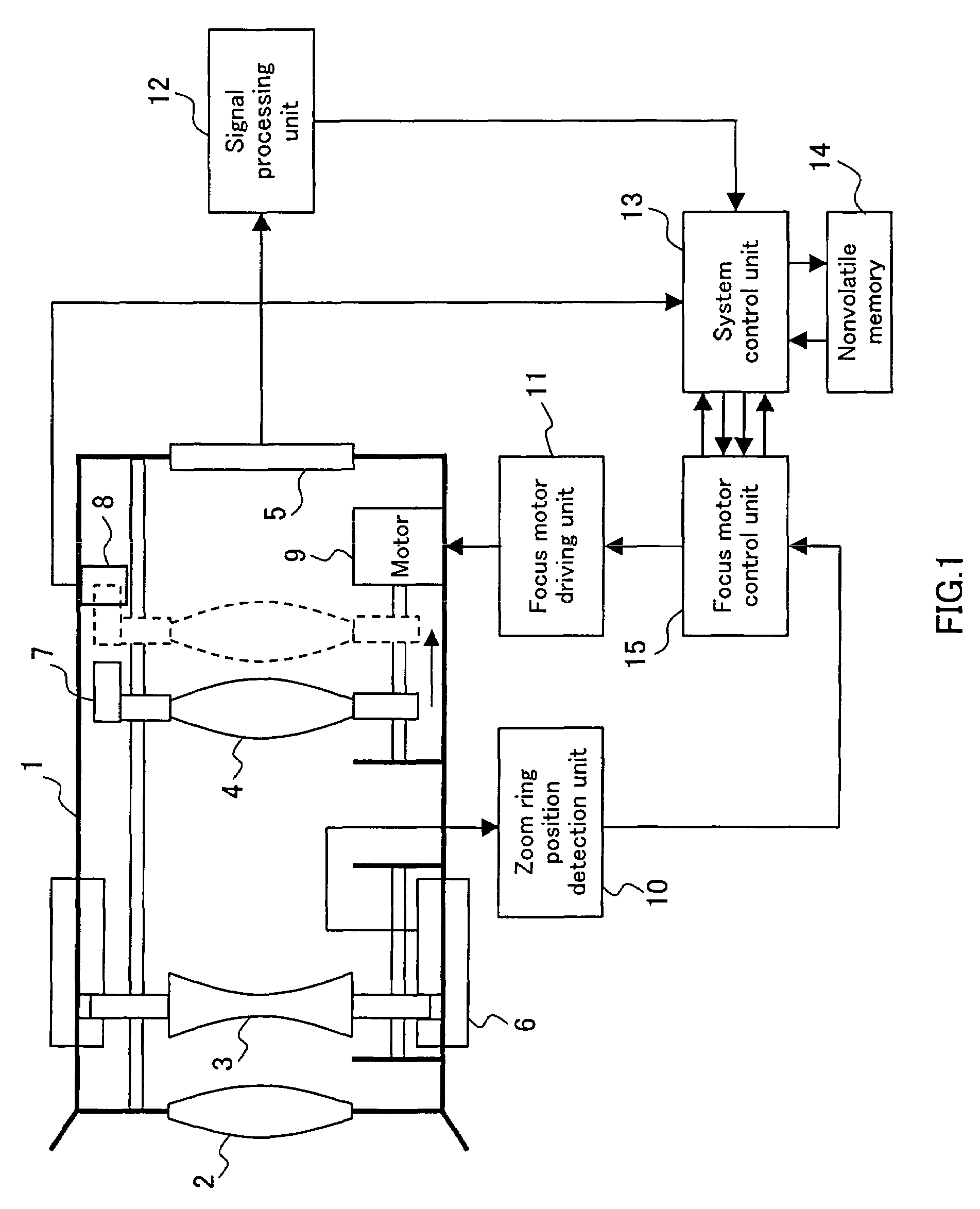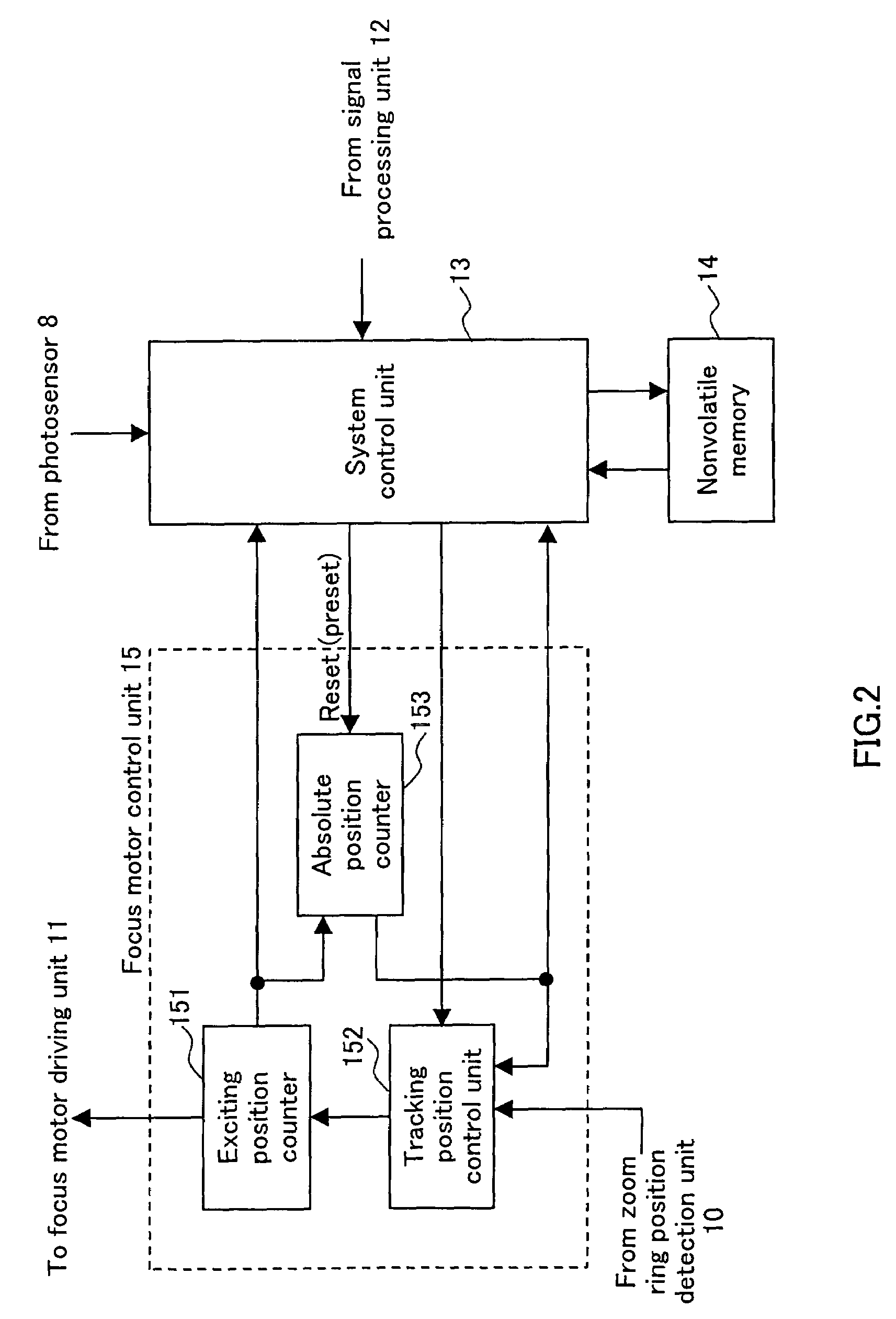Lens driving apparatus, imaging apparatus, and lens barrel and camera main body used for this
a driving apparatus and lens barrel technology, applied in the field of imaging apparatus, can solve the problems of difficult to achieve suitable performance for realizing high-quality images, disadvantageous in terms of compact size and cost, and difficult to realize compact lens barrel and low cost, and achieve smooth origin detection and precise alignment control. , the effect of low cos
- Summary
- Abstract
- Description
- Claims
- Application Information
AI Technical Summary
Benefits of technology
Problems solved by technology
Method used
Image
Examples
embodiment 1
[0177]FIG. 1 includes a schematic diagram and a block diagram of a lens driving apparatus according to Embodiment 1 of the present invention. In FIG. 1, numeral 1 denotes a lens barrel, 2 denotes a fixed lens fixed to the lens barrel 1 and 3 denotes a zoom lens. The zoom lens 3 moves in the optical axis direction so as to adjust a zoom magnification along with the rotation of a zoom ring 6 along the perimeter of the lens barrel 1. Numeral 4 denotes a focus lens. When a motor 9 as a driver rotates, the focus lens 4 moves in the optical axis direction along a lead screw with threads cut therein so as to enable the adjustment of focus.
[0178]In the example of FIG. 1, the motor 9 is a stepping motor that rotates in accordance with a phase of a driving signal (exciting signal) for a motor coil output from a focus motor driving unit 11. Numeral 5 denotes an imaging device that converts an image of a subject captured through the fixed lens 2, the zoom lens 3 and the focus lens 4 into an ele...
embodiment 2
[0214]The following describes Embodiment 2 of the present invention. Embodiment 2 is the same as in Embodiment 1 in the configuration shown in FIG. 1 and FIG. 2 and the origin detection operation during the process adjustment described referring to FIG. 3 and FIG. 4.
[0215]Referring now to FIGS. 8 and 9, the origin detection operation of a focus lens 4 during the normal operation in Embodiment 2 is described below. FIG. 8 is a drawing for explaining the origin detection operation during the normal operation according to Embodiment 2. Since the exciting position, the A-phase current, the B-phase current, the absolute position counter and the photosensor output level shown in FIG. 8 are the same as those described in FIG. 3, the duplicate explanations are omitted.
[0216]Embodiment 2 is different from Embodiment 1 in that the exciting position is decreased by two at one time when the focus lens 4 is shifted to the imaging device 5 side. Therefore, an absolute position counter 153, which ...
embodiment 3
[0226]The following describes Embodiment 3 of the present invention. In the following description, duplication of the configurations shown in FIG. 1 and FIG. 2 described in Embodiment 1 is omitted. Embodiment 3 explains the example where the focus motor driving unit 11 of FIG. 1 drives the motor 9 to rotate by substantially sine wave driving (called also microstep driving). Further, the exciting position counter 151 of FIG. 2 is a 5-bit counter that comes full circle with the counter value of 32 representing one cycle (360 degrees) of the driving electrical angle of the motor 9. The absolute position counter 153 operates in synchronization with the counter value of the exciting position counter 151, and is preset or reset under a predetermined condition described later.
[0227]The operation is described below, with reference to FIG. 10. FIG. 10 is a drawing for explaining an origin detection operation during the process adjustment according to Embodiment 3. The “exciting position” sho...
PUM
 Login to View More
Login to View More Abstract
Description
Claims
Application Information
 Login to View More
Login to View More - R&D
- Intellectual Property
- Life Sciences
- Materials
- Tech Scout
- Unparalleled Data Quality
- Higher Quality Content
- 60% Fewer Hallucinations
Browse by: Latest US Patents, China's latest patents, Technical Efficacy Thesaurus, Application Domain, Technology Topic, Popular Technical Reports.
© 2025 PatSnap. All rights reserved.Legal|Privacy policy|Modern Slavery Act Transparency Statement|Sitemap|About US| Contact US: help@patsnap.com



